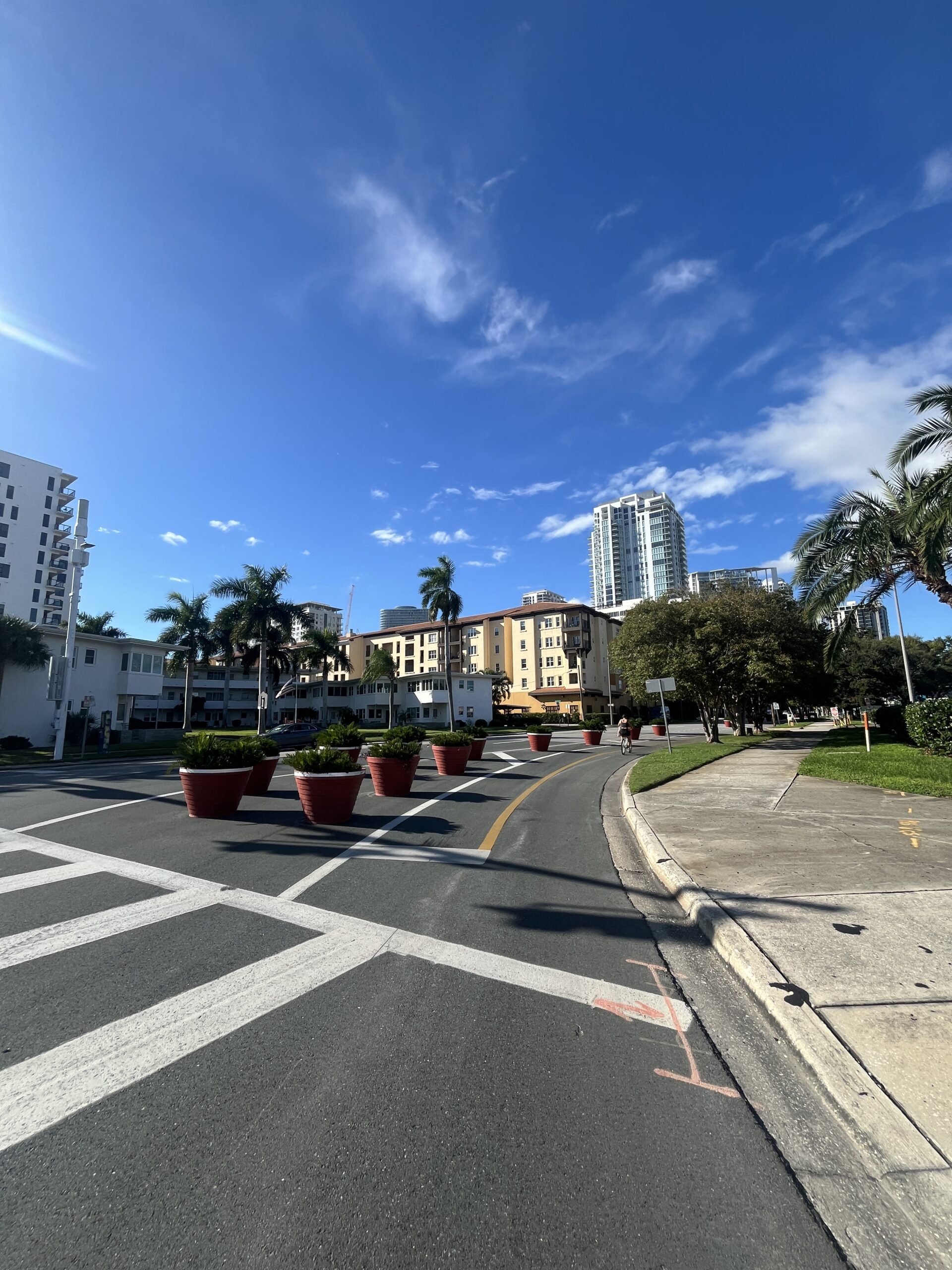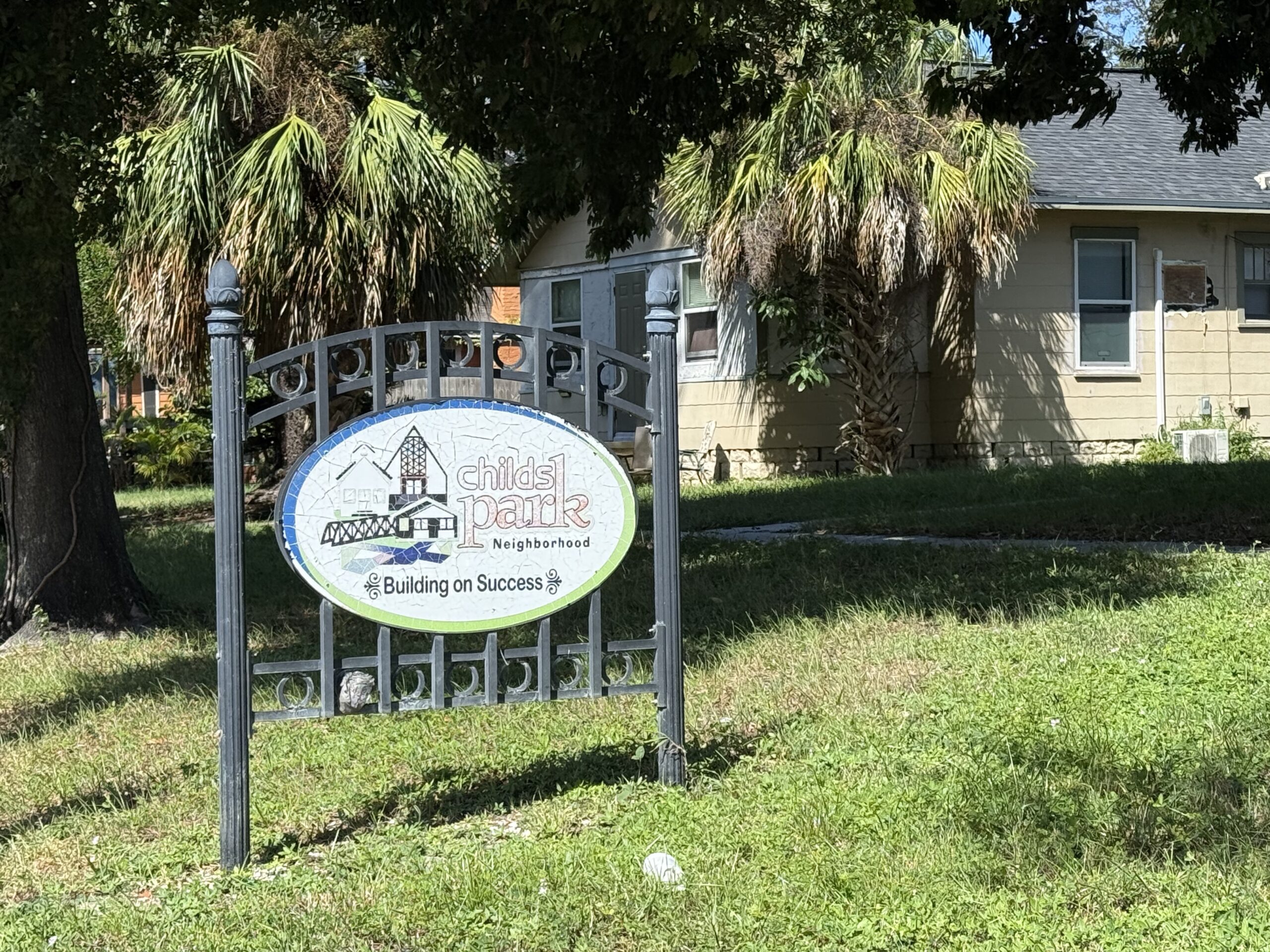By Daniela Trujillo Lopez
Electric scooters have become increasingly common in downtown St. Petersburg, but their growing presence has also raised concerns about safety and accessibility.
The city has expanded its micro-mobility program with hundreds of additional scooters this year, sparking debate over how to balance convenience with public safety.
“When e-scooters, or any barriers, are left in the middle of a pathway or blocking ADA ramps, they can make it difficult or even impossible for someone to safely navigate the area,” USF Student Accessibility Services Associate Director Allison Dinsmore said. “What should be a predictable and accessible route can become unsafe and limit someone’s independence.”
According to the city’s Transportation and Parking Management Department, St. Petersburg launched its scooter program in 2020 with Veo and Razor, but now Lime and Spin are the new providers and plan to add 900 more scooters this year.
During a May 2025 city committee meeting, transportation director, Evan Mory, described the program as “generally successful,” noting that St. Petersburg was the first medium-sized United States city to require scooters to be parked in designated corrals.
“We were the first large or medium city to require 100% corral-based parking,” Mory said. “The industry norm was to park haphazardly, wherever you could find a space.”
The city maintained that scooters offer residents and visitors a sustainable, affordable way to travel within the downtown core. However, as the scooter quantity increased, residents and accessibility advocates questioned how St. Petersburg would ensure accessibility for pedestrians, especially those with disabilities.
The city and scooter providers have placed strong emphasis on reminding riders that e-scooters were not allowed on sidewalks. Still, challenges remain. Mory acknowledged that sidewalk riding and improper parking continue to be issues despite city regulations and in-app reminders.
“Just like we see some people making poor choices when they drive or ride bikes, we’ve had instances of poor scooter riding behavior,” he said. “The most common improper behavior we hear about is sidewalk riding.”
Signage across downtown reminded riders that scooters and e-bikes were not allowed on sidewalks, and markings on ramps indicated where riding or parking is prohibited.
Cheryl Stacks, the city’s transportation manager, said new scooters will include camera-based sidewalk detection technology and stronger education tools to address those concerns.
“We really like that the new devices have camera-based sidewalk riding technology, which helps us detect and enforce the sidewalk riding rules,” Stacks said. “They’ll couple that with an education program.”
Despite these technological improvements, residents said scooters were still ending up in unsafe places. Over the weekend, one scooter was seen parked directly in the middle of a sidewalk near Central Avenue, blocking pedestrian access.
While city officials emphasize proper parking zones, scooters like the one above are still commonly found blocking walkways or ramps and posing accessibility challenges for pedestrians and people with disabilities.
Even enforcement officials admit the system has limits. Ken Knight, public information specialist for the St. Petersburg Police Department, said the department doesn’t collect scooter complaint data unless a criminal violation occurs.
“We wouldn’t necessarily receive a call about e-bikes or scooters being left around the city,” Knight said. “If it deals with a crime, we’ll respond, but general complaints or parking issues would go through the city, not law enforcement.”
Knight added that code enforcement or zoning would likely handle non-criminal reports of improperly parked scooters and suggested reaching out to providers for their own complaint records.
That lack of data makes it difficult to measure how often scooters block sidewalks or how effective enforcement efforts have truly been. This leaves residents without clear answers about progress.
The City of St. Petersburg’s Public Information Office was contacted for updated scooter complaint and enforcement data but had not responded by publication time.
During the same May 2025 city meeting, Sgt. Mike Shade, who leads the St. Petersburg Police Department’s traffic section, said the department saw dramatic improvement since launching an enforcement campaign following a fatal scooter crash in 2023.
“After that, we did significant enforcement operations to get people on board,” Shade said. “We’ve really seen the results of that. We don’t have the rental scooter problem we had when the program first started.”
Shade said that most current violations now involve privately owned scooters, which can travel much faster than city-approved rental models.
Scooters remained a common option for workers and tourists looking for quick, inexpensive transportation. However, even regular users said the system isn’t always clear.
“I use them almost every day to get to work,” said Brandon Beckner, a busser at Ford’s Garage. “The rules aren’t always clear, and sometimes you have to leave the scooter in a place that feels awkward. More parking zones would help for sure.”
The city continues to collect scooters left in improper locations, but whether enforcement and education are enough to solve the problem remains uncertain.
Across Florida, cities such as Tampa, Orlando and Miami have also faced similar challenges balancing micro-mobility and accessibility. As St. Petersburg expanded its scooter fleet, residents and advocates said maintaining clear, barrier-free sidewalks is essential to ensuring safety for everyone.




